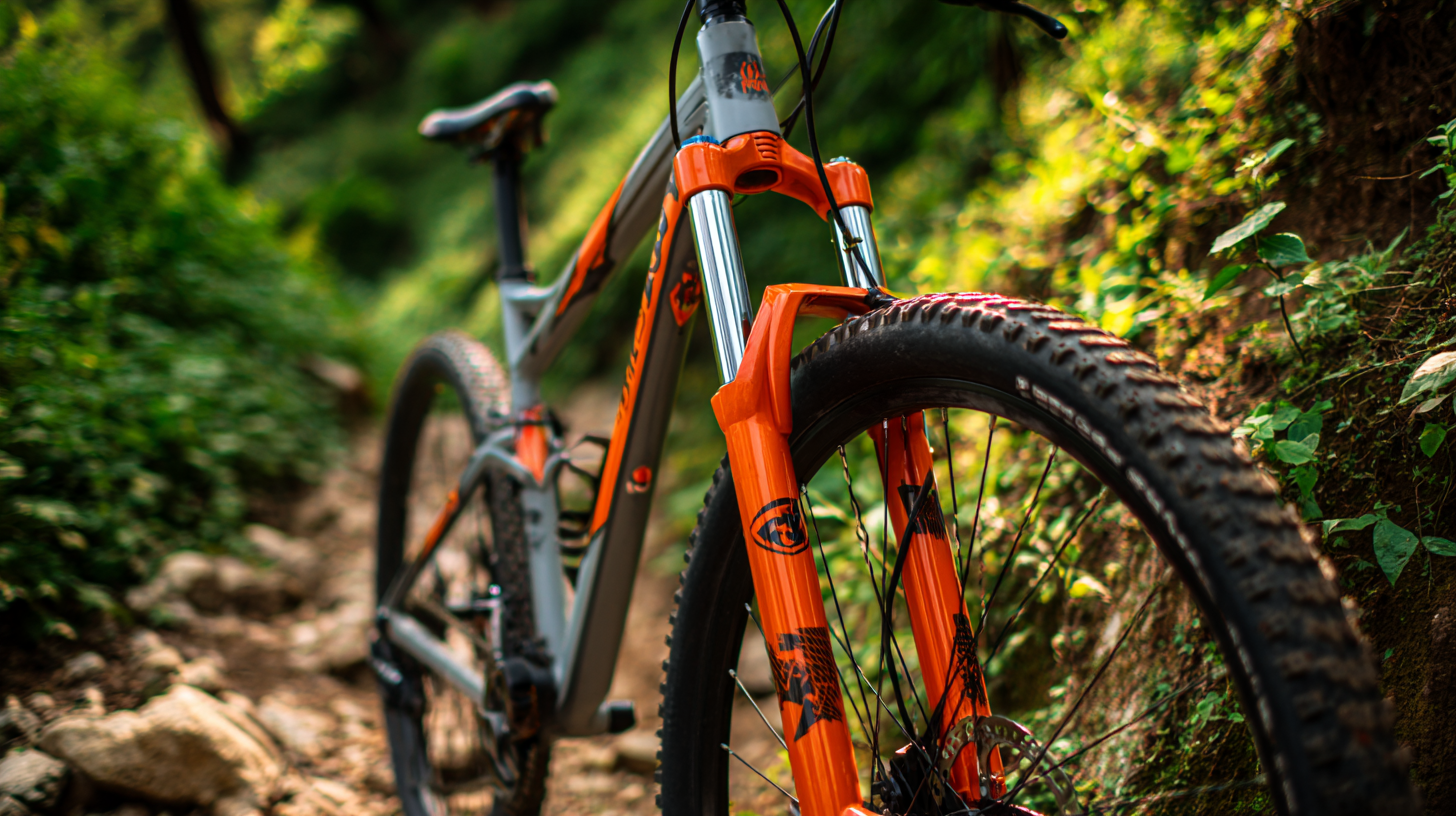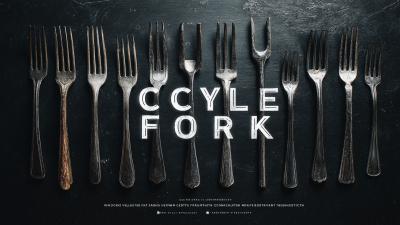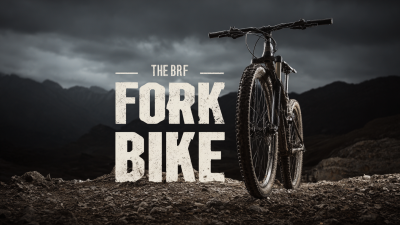In the rapidly growing cycling industry, which is projected to reach a staggering $36 billion by 2027, understanding how to source the ideal fork of the bike is crucial for manufacturers and retailers alike. The fork of the bike is not just a structural component; it plays a significant role in determining overall performance, comfort, and safety for riders. According to recent industry reports, the demand for high-quality bike components is on the rise, driven by the surge in cycling popularity and an increasing focus on sustainable transportation options. By implementing strategic sourcing practices and focusing on quality and innovation, businesses can capitalize on this thriving market. In this blog, we will explore five essential tips for sourcing the perfect fork of the bike, ensuring you stay ahead in this competitive landscape while meeting the diverse needs of modern cyclists.

The $36 billion bicycle industry is experiencing significant growth, driven by several key market trends. According to a report from Allied Market Research, the global bicycle market is projected to reach $80 billion by 2026, growing at a compound annual growth rate (CAGR) of 8.2%. This surge can be attributed to the increasing focus on health and fitness, the rise of eco-friendly transportation, and the surge in cycling as a recreational activity during the pandemic. In particular, electric bicycles have gained popularity, with a market value expected to exceed $24 billion by 2027, as more consumers seek convenient and sustainable commuting options.
Furthermore, advancements in bicycle technology and design are capturing consumers' attention. The demand for high-performance bikes, especially in urban areas, has led to innovations in materials and engineering. As revealed in a study by the NPD Group, mountain bikes and road bikes represent significant sales growth categories, reflecting a shift toward serious biking culture. Retailers and manufacturers must stay abreast of these evolving preferences, aligning their product offerings with emerging trends such as customizable features and increased online sales channels, in order to capture the attention of a diverse consumer base and drive sales effectively in this rapidly expanding market.
When it comes to sourcing the perfect bike fork, understanding the different types available is fundamental. A bike fork can significantly affect the performance and comfort of the ride, which is why distinguishing between them is crucial. The most common types of bike forks include rigid, suspension, and adjustable forks. Rigid forks are favored in road and track bikes for their lightweight and direct handling, while suspension forks are essential for mountain bikes as they provide shock absorption, allowing for a smoother ride on rough terrains. Adjustable forks add versatility, giving riders the option to tailor their bike's handling characteristics based on their specific needs or riding style.

Each type of bike fork not only influences ride quality but also impacts overall sales potential in the booming $36 billion bike market. For instance, with the growing trend of bicycle commuting and recreational riding, manufacturers must highlight the benefits of high-quality suspension forks to attract buyers seeking comfort and control. Additionally, eco-conscious consumers might lean towards rigid or adjustable forks that emphasize durability and sustainability. By emphasizing these unique benefits in marketing strategies, retailers can effectively capture the attention of diverse cycling demographics and drive sales. Understanding these nuances in bike fork types will ultimately empower businesses to make informed sourcing decisions that align with market demands.
When sourcing bike forks, evaluating quality and performance is paramount to standing out in the competitive $36 billion cycling market. High-quality bike forks not only enhance the safety and handling of the bicycle but also contribute significantly to rider satisfaction. According to a recent market report by Grand View Research, the global bicycle parts market is projected to grow at a CAGR of 6.2% from 2021 to 2028, indicating an increasing demand for reliable components such as forks. Sourcing forks that meet international safety standards can significantly reduce the risk of accidents and improve brand reputation.
Furthermore, performance factors such as weight, stiffness, and damping properties cannot be overlooked. A study published in the Journal of Sports Engineering and Technology highlights that a lighter fork can improve overall bike performance, while the correct stiffness enhances power transfer during rides. Suppliers should prioritize materials such as carbon fiber and high-grade aluminum, as these not only reduce weight but also provide better shock absorption. By focusing on quality and performance in sourcing, brands can position themselves effectively in a burgeoning marketplace and attract discerning consumers who demand excellence in their riding experience.
In the competitive landscape of the $36 billion bicycle market, building robust relationships with suppliers is crucial for successful sourcing. Recent industry reports indicate that up to 70% of a bike's performance can be traced back to the quality of its components, making a reliable fork selection pivotal for both safety and customer satisfaction. By fostering strong connections with suppliers, retailers can gain access to better pricing structures and ensure the availability of high-demand products, ultimately translating to higher sales margins.
Additionally, maintaining open lines of communication with suppliers can lead to invaluable insights regarding market trends and potential new offerings. For instance, a study by the National Bicycle Dealers Association revealed that suppliers who actively engage with their retailers see a 30% increase in product turnover. By leveraging these relationships, businesses can not only secure a competitive edge in pricing but can also enhance their inventory strategy, allowing for a more agile response to fluctuating consumer demands. Prioritizing supplier partnerships is, therefore, an essential strategy for any retailer looking to thrive in the burgeoning bicycle market.
| Tip | Description | Potential Impact on Sales | Supplier Relationship Importance |
|---|---|---|---|
| Research Market Trends | Stay updated with the latest biking trends to identify popular fork types. | Increase sales by aligning inventory with consumer demand. | Building trust can lead to better insights on market trends. |
| Quality Over Cost | Choose high-quality forks that enhance bike performance rather than just low-cost options. | Higher quality can justify premium pricing, boosting profit margins. | Strong relationships can lead to access to superior quality products. |
| Negotiate Terms | Engage suppliers in discussions about pricing, minimum order quantities, and delivery times. | Better terms improve cash flow and reduce stock-out scenarios. | Strong ties encourage favorable negotiations. |
| Diversify Suppliers | Avoid dependency on a single supplier for improved reliability. | Reduces risk of supply chain disruptions that can affect sales. | Multiple trusted suppliers ensure consistent quality and stock levels. |
| Leverage Technology | Utilize software tools for inventory management and supplier evaluation. | Efficiency gains can lead to improved order fulfillment and sales performance. | Tech-savvy suppliers are often more reliable in the supply chain. |
In the booming $36 billion bicycle market, effectively marketing bike forks is crucial for increasing sales. With the right strategies, brands can emphasize the unique features of their products, attracting more customers. According to a recent industry report, demand for high-performance bike components, particularly forks, has surged by 20% over the past year, highlighting the necessity for targeted marketing.

One effective strategy is to leverage social media platforms to showcase the fork's design and engineering. High-quality visuals and engaging videos can illustrate how the fork enhances ride quality and performance, catering to both casual cyclists and serious enthusiasts. Utilize user-generated content and testimonials to build trust and engagement with potential buyers.
Additionally, consider educating consumers on the technical aspects of bike forks. Providing informative blog posts or videos about materials, weight distribution, and compatibility can help demystify the product. Highlighting features such as adjustable dampening or air spring technology not only informs but also positions your brand as an authority in the market, ultimately driving sales and brand loyalty.






